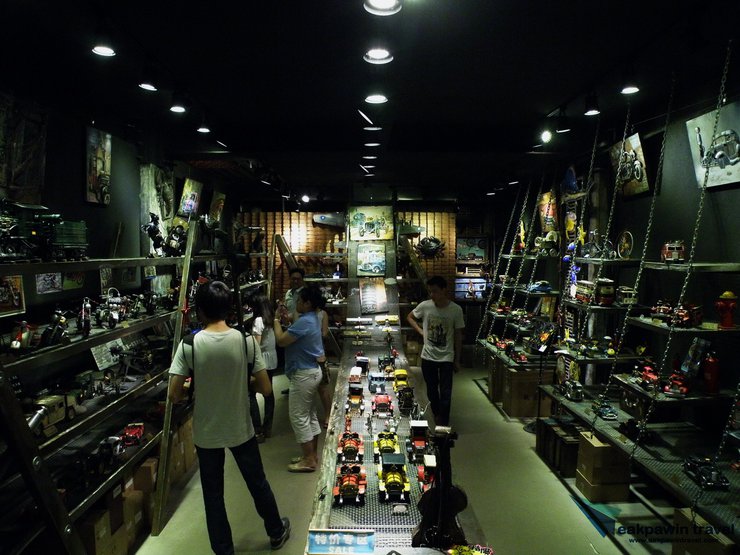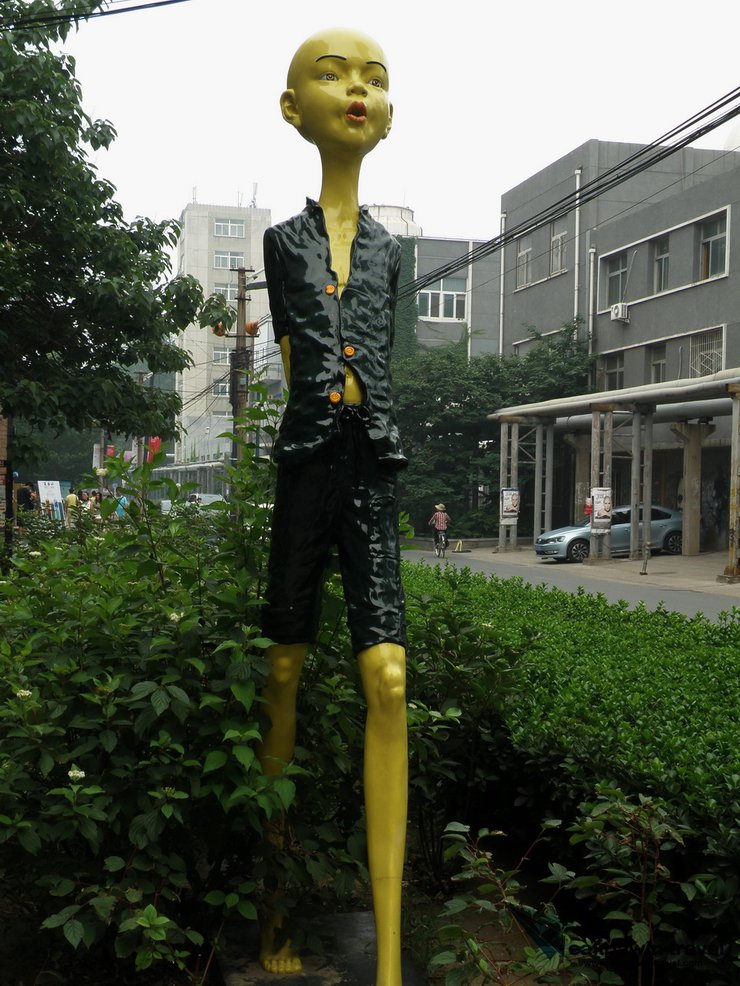If you have already visited Beijing's iconic landmarks such as the Great Wall, the Forbidden City, the Summer Palace, the Temple of Heaven, and other major historical sites, and still have time to spare, the 798 Art Zone in Beijing is an excellent alternative for art enthusiasts. This creative community is a perfect place to spend half a day or more exploring the vibrant art scene.

798 is located in Dashanzi, sometimes referred to as the Dashanzi Art District (DAD), in the Chaoyang District of northeastern Beijing.
The Transformation of 798: From Military Factory to Artistic Hub
Originally, this area was a military communications equipment factory. During the initial development of the Dashanzi Industrial Zone, China sought the expertise of East Germany, a leader in manufacturing, to provide consultation, planning, and construction supervision. Construction began in 1951 with the first factory designated as 718, "7" being the code used by the Chinese government for military factories.
Later, production expanded to supply China's allies, including Russia and North Korea, leading to the construction of several more factories beginning with "7," with 798 being the largest.
Factories operated for about 30 years. There were changes in government policy. Many industrial factories no longer received government support. Many had to close down. The once bustling factories were abandoned.
English:

In 2000, a group of Beijing artists seeking a quiet, affordable space conducive to artistic creation began renting abandoned factories as studios. Subsequently, artists from various disciplines followed suit, occupying the space for studios and residences. The establishment of galleries to accommodate art exhibitions further enhanced the community's profile. International art exhibitions propelled 798 into the limelight, transforming it into an artistic hub that seamlessly blends the old with the new. Consequently, the community witnessed a surge in restaurants, cafes, and souvenir shops, solidifying 798 Art Zone's position as one of Beijing's top tourist destinations, attracting both domestic and international visitors seeking an immersive art experience.
Although there is no subway access to the 798 Art Zone, I took Line 10 to Sanyuanqiao Station and exited through Exit C. The guidebook suggested taking bus 401 from the Sanyuanqiao stop to Dashanzi Lukou Nan and crossing the street to reach the Art Zone, or bus 403 to Dashanzi Lukou Dong and walking a bit further before turning right to enter the north gate. However, I couldn't find the bus stop after exiting the subway station, so I took a taxi. I showed the driver the Chinese characters for "798 Art Zone," which are pronounced "Qījiǔbā Yìshù Qū" but were too difficult for me to pronounce correctly. Nevertheless, just the written characters were enough for the taxi driver to take me close to the entrance of the Art Zone.
The 798 Art Zone offers a relaxed and unhurried atmosphere. Visitors can stroll through the area, taking in the art, snapping photos, and browsing for unique souvenirs.


The old factory buildings in the 798 Art Zone are examples of German Bauhaus architecture. These buildings feature open spaces, high ceilings, and large glass windows on one side, allowing natural light to flood in. The iconic sawtooth roofs, a hallmark of the Bauhaus style, are a distinctive feature of the 798 Art Zone. These buildings represent authentic and original Bauhaus architecture, a rare sight in the modern world.


I purchased a map and wandered through the streets of the art community. In various corners, there were large sculptures, each unique and reflecting the ideas and imaginations of the artists who created them. In the studios, which were lined up in rows within the space of an old factory, works by artists of various styles were displayed and sold. These included Western-style paintings, paintings that expressed the spirit of Asia, abstract paintings, and other contemporary art.


Some studios produce and sell freestanding art, such as ceramics, plaster sculptures, or metalwork. There are also photography studios in the Art Zone. The studio I visited was working on a photoshoot for a magazine. Visitors can observe the work up close in a designated area. From the outset, all the artists in this community have agreed to allow visitors to 798 to view various aspects of their work free of charge, including some of the production process and the finished pieces displayed for sale to interested buyers.


Not only are works by established artists with the means to rent studios on display, but small-scale handicrafts created by local residents are also sold on the ground, spread out on mats. These include items such as fabric bags, jewelry, earrings, and dolls, attracting yuan from tourists' wallets with ease. The art of paper-cutting, which creates portraits from the side of a person's face, is also popular, with people lining up for the service.
Is there anything else I can help you with?

Beyond the 798 Art Zone, the artistic community has expanded into other factories. Some have been transformed into public parks, such as the 751 area, which features old buildings and railway tracks. Vintage locomotives are parked there as photo backdrops, and some couples even choose this location for their pre-wedding photoshoots.

Nestled among the studios and galleries of the 798 Art Zone, numerous restaurants and cafes offer a unique dining experience. Each establishment boasts its own artistic flair, often adorned with paintings on the walls and other art pieces available for purchase.

After strolling through the art exhibits for a while, I decided to take a break and have a coffee at a small cafe. The air conditioning in the cafe and the large iced latte helped to cool me down considerably. I had only visited a few of the studios and galleries in the 798 Art Zone, which covers an area of 0.6 square kilometers. When I finished my coffee, it was time for me to continue exploring the art-filled atmosphere.
eakpawintravel
Friday, September 27, 2024 10:41 AM
















